Selecting my Top Ten Breckland birds should have been easy, but there was one crucial decision to be made. Should my Top Ten be birds that birders come to the Brecks to see, or my 10 favourite species? In the end I opted for a combination of the two.
Great Bustards were lost from the Brecks 192 years ago
Breckland, by the way, is an area of dry, sandy soils on the borders of Suffolk and Norfolk, two counties in the East of England. The area is notable for its low annual rainfall – it is one of the driest areas in Britain. Two centuries ago it was a barren area where Britain’s last Great Bustards were still to be found on the extensive rabbit-cropped heaths. The last nest was recorded in 1832, and after that the birds disappeared. According to Claud Ticehurst, writing in his History of the Birds of Suffolk (1932), it was in 1812 that belts of fir trees were first planted across the Brecks “in order to protect the crops of rye from the wind-blown sands, and it seems that this breaking up of the wide open spaces was unsuited to the wary habits of the Great Bustard”. There’s currently a reintroduction project for Great Bustards on Salisbury Plain in Southern England, but there would be no point in releasing birds in the Brecks as we no longer have the habitat.
What the Brecks does have, though, is the largest lowland pine forest in Britain. Planting started after the First World War, with the aim of providing a strategic reserve of timber for the nation. According to Wikipedia, “the creation of the forest destroyed much of the typical Breckland environment of gorse and sandy ridges, ending the frequent sand blows”. Native Scots pines were planted initially, but today the forest is dominated by Corsican Pines. The mature stands of Corsican Pines are unattractive to birds, but when trees are felled the cleared areas attract Nightjars and Woodlarks, two of the Breck’s special birds.
No 1 Stone Curlew
Britain is on the very northern limit of the Stone Curlew’s range. With a breeding population of around 360 pairs, it is also one of our rarest breeding birds. The Brecks is the most important area in England for these fascinating waders, with an estimated 270 pairs, of which 70% nest on arable farmland. The European Breeding Atlas 2 notes that “the Eurasian Thick-knee [not a name anyone in the UK uses] has adapted to open arable land as long as the vegetation stays low, allowing good all-round visibility”. This is certainly true in the Brecks.
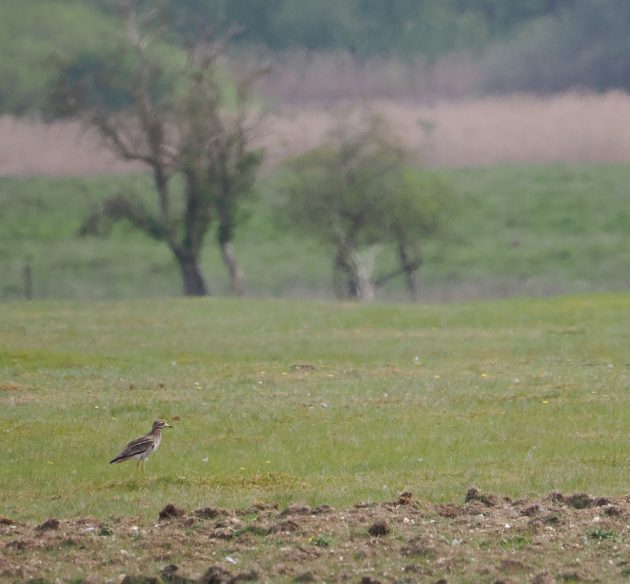
A Stone Curlew on the Norfolk Wildlife Trust’s Weeting Heath reserve (photograph by David Addy). Weeting Heath is the easiest place to see Stone Curlews in England
The Breckland population is healthy due to considerable efforts by both farmers and conservationists to help the birds. Being wary, cryptically coloured and very good at keeping out of sight, seeing these birds is always a challenge. Most visiting birders opt to visit the Norfolk Wildlife Trust’s reserve at Weeting Heath, where the land is managed for the birds, and where at least two pairs nest within sight of the hides. I can usually find birds much closer to home, but seeing a Stone Curlew is always a thrill.
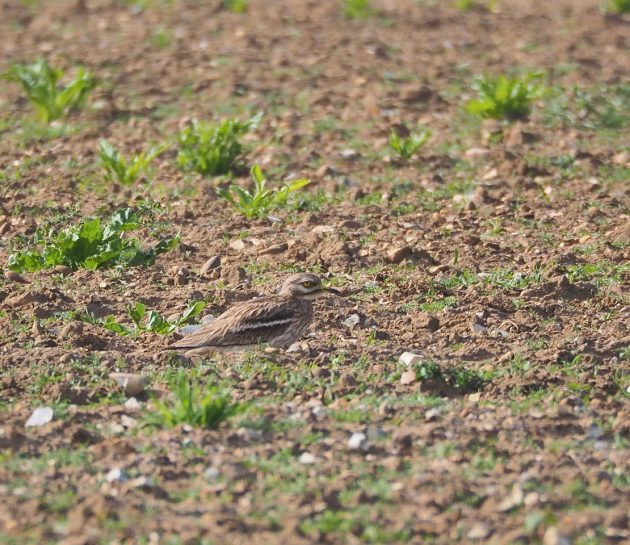
The great majority of Stone Curlews in the Brecks nest on arable land
No 2 Goshawk
The vast ranks of conifers that make up Thetford Forest may not be great bird habitat (Goldcrests and Coal Tits are the most numerous birds you will find), but they do provide safe nesting sites for Goshawks, and there are several pairs in the Brecks. Goshawks have an interesting history in England, for it is only in recent years that they have become widespread breeding birds. Ticehurst noted that it “was never anything but rare in Suffolk” and he failed to find any records for the first three decades of the 20th century. Today, though Goshawks probably breed in every English county, these powerful hawks are still much sought after by birders, many of whom come to the Brecks to see them.
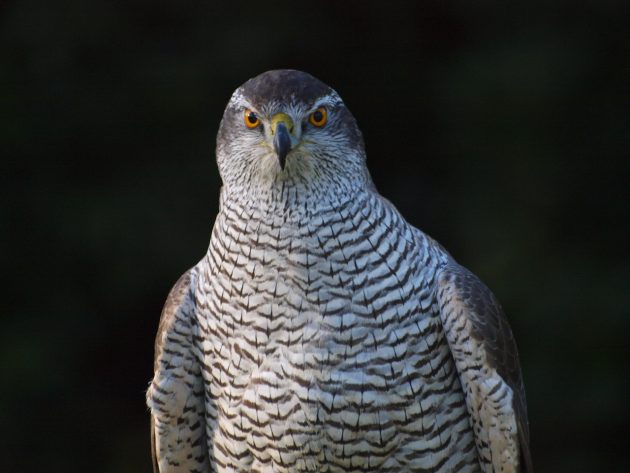
The best time to find one is on sunny days in early March when they display over their territories. There are a couple of well-known sites where you can be almost sure of seeing them, and in season these can attract crowds of 30 or even 40 people. There are, of course, other places where you can watch for them undisturbed by other birders.
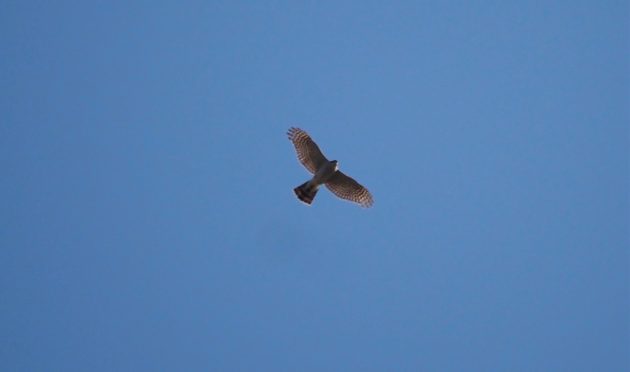
No 3 Woodlark
There are reckoned to be around 3,000 pairs of Woodlarks in Britain, but this still makes them a scarce and sought-after species. The heaths of the Brecks, along with the forest clearings, provide good habitat for this bird, which has one of the most attractive of Latin names: Lullula arborea. The first part of that name refers to the Woodlark’s wonderful song, which many reckon to be one of the prettiest songs of any British bird. I usually hear my first Woodlark singing in early January, a cheering sound in the depths of winter, and one which holds promise for the year ahead. They continue to perform until June – they sing in the air, or from a favoured high song post, such as the top of a dead tree. When they stop singing they are much harder to find, and in summer I can go weeks without seeing one.
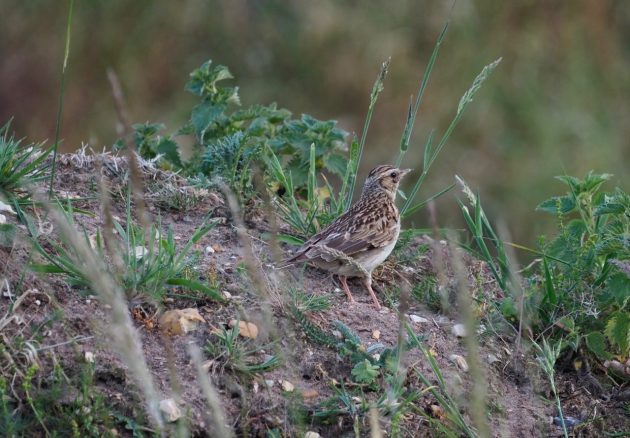
No 4 Curlew
Curlews only started to colonise the Brecks in 1947, so they don’t have a long history of breeding in the area. Today there are probably between 30 and 40 pairs, most of which nest on farmland. The population is vulnerable and isn’t increasing, but it does appear to be holding its own. This may be because foxes – one of the young Curlew’s most serious predators – are strictly controlled throughout much of the Brecks where game shooting takes place. As a result sufficient young birds are fledged most years to sustain the population.
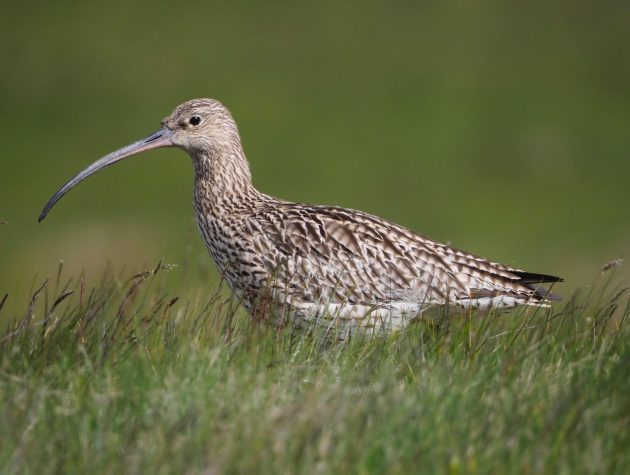
Curlews are breeding visitors, with the first birds returning to their territories in late February and early March. The haunting, melancholic song of the Curlew is one of the great sounds of spring.
No 5 Hawfinch
These handsome finches with their impressive, nutcracker bills are rare and highly localised birds in southern Britain. The Brecks is the best place to see them in Eastern England, as there is a small breeding population, probably augmented by migrants in the winter. The most reliable site for them is Lynford Arboretum in Norfolk, where there is a regular winter roost. This can number anything from half a dozen birds to more than 50, but big flocks have become unusual in recent years.
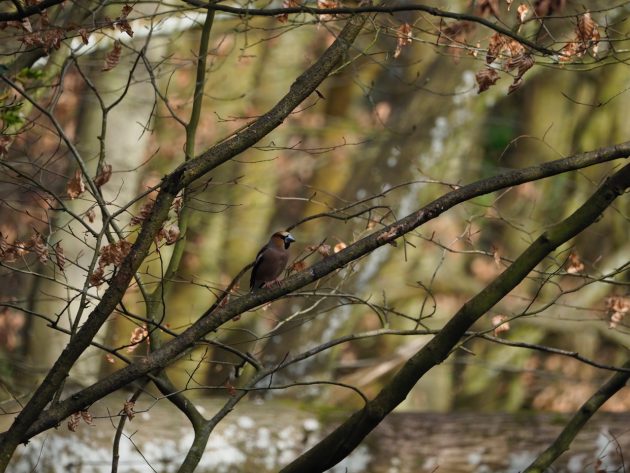
A friend is fortunate enough to see them in his Breckland garden annually, and in 2022 two pairs nested. Sadly, they haven’t nested since; this year there were no spring sightings, though the occasional bird was seen in the summer.
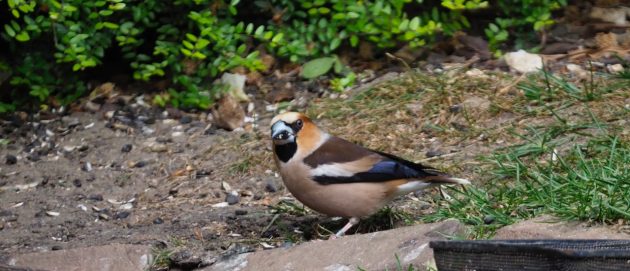
This Hawfinch was photographed in a friend’s Breckland garden in May 2022
No 6 Crossbill
It was a tricky decision whether to include this finch. The Brecks used to be renowned as one of the best places to see nesting Crossbills, and in the 1930s egg collectors were drawn to the area to raid their nests. One of them was Desmond Nethersole-Thompson, who notes in his book Pine Crossbills (1975) that “We also quickly discovered that, apart from the periodic invasions or irruptions from northern Europe the size of the Breckland populations of crossbills greatly fluctuated from year to year”. The Breckland population is currently at a low, with just a few pairs. It’s not a bird I can be confident of finding, so any sightings are always a bonus. This year I’ve only seen them twice.
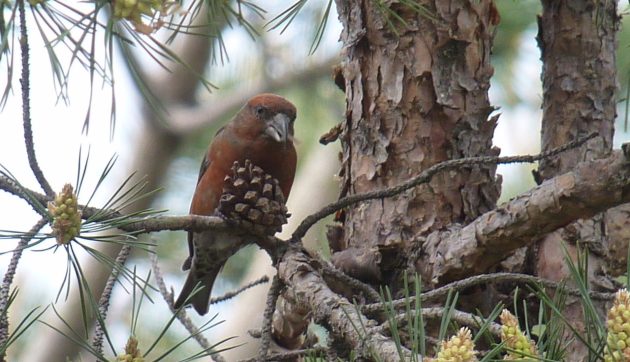
No 7 Firecrest
Sharing with the Goldcrest the title of Europe’s smallest bird, Firecrests are easily overlooked. Ticehurst regard it as “amongst the rarest in Suffolk”, and it was only in 1975 that they were first found breeding in the Brecks for the first time. Today there’s a small but growing population in the area, but finding one is always a challenge. The best way to do so is listening for the male’s song, which is slightly lower pitched than that of the Goldcrest, and which lacks the rhythm of the latter. When you do finally see your Firecrest you discover a little gem of a bird, its broad white supercilium (eye-stripe) making it instantly recognisable. There are a number of sites in Thetford Forest where these bird breed, but Lynford Arboretum is probably the most reliable.
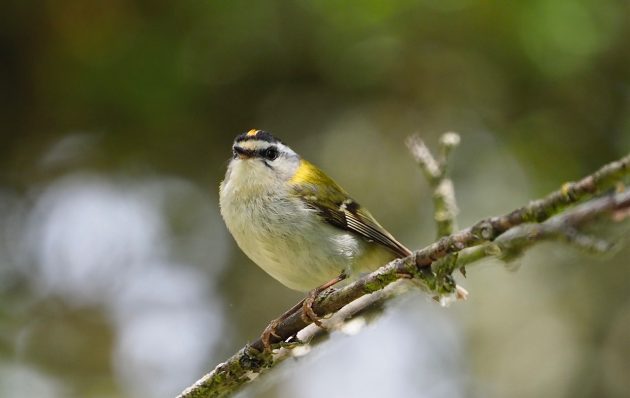
No 8 Woodcock
Woodcock winter in the area in good numbers. In January this year I watched beaters flush 14 from a single small wood on a Pheasant-shooting day. Though Woodcock are a popular quarry species, many people choose not to shoot them, and on this day nobody raised a gun to one. Most birdwatchers regard Woodcock as rare birds. They’re not, but they are difficult to see unless flushed by dogs.
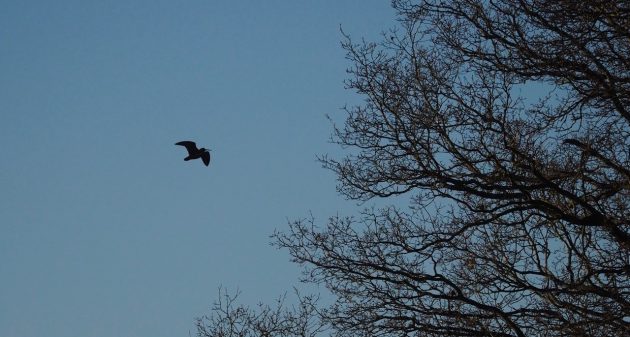
The Brecks has a small but declining breeding population – despite research, nobody knows why the number of nesting birds is falling. They still breed on my local heath, just a couple of miles from home, so in early spring through to mid summer I often go to watch for roding males. Roding is the name given to the curious display flight of the Woodcock, when the males patrol their territory at dusk and dawn, flying low over the tops of the trees. I rarely fail to enjoy good sightings, though I’ve yet to rise to the challenge of getting good photographs.
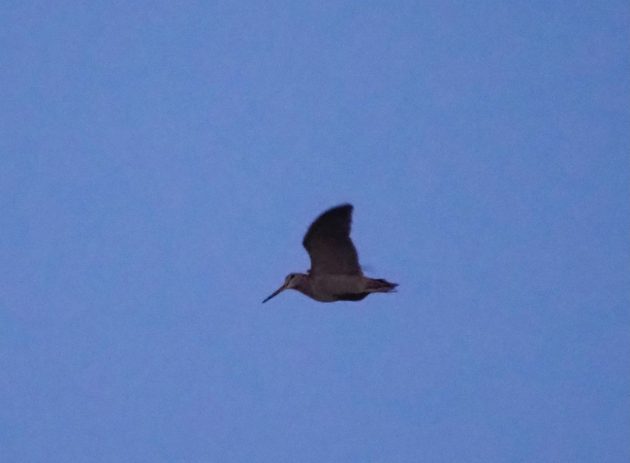
No 9 Long-eared Owl
Possibly the most frustrating bird in my Top Ten, for these owls are shy and secretive, as well as being scarce and extremely difficult to see. Usually the easiest way to locate a breeding pair is to listen for the begging call of the young, a call that carries for considerable distances, and which can be listened for in late May and early June.
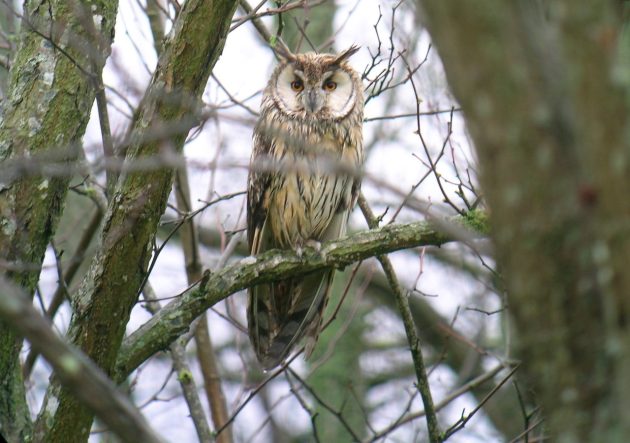
Though I have seen these owls hunting in broad daylight in Northern France, I’ve never seen a British bird do the same. This year I failed to find any breeding pairs, and my only sighting on my local heath was a bird that flew past me when I was looking for Woodcock in May. Was it breeding nearby? I never found out.
No 10 Cuckoo
Though the Cuckoo is a widespread breeding bird throughout the British Isles, numbers have fallen dramatically in recent years, and its song is no longer the familiar sound it once was. Fortunately we still have a good population here in the Brecks, helped locally, no doubt, by a healthy breeding population of Reed Warblers in our valley fens. Reed Warblers are the Cuckoo’s favourite species to parasitise here.
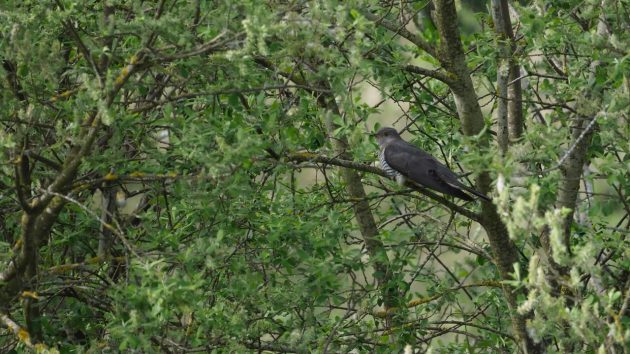
The first local Cuckoo is generally to be heard around the 21st April, and I can then expect to hear one every day until the end of June, when the males head back to tropical Africa. Simple though the Cuckoo’s song is, for me it is the sound of spring, and one that never fails to make me smile and feel happy to be alive.
Source link
Facebook
Pinterest
Twitter
LinkedIn

